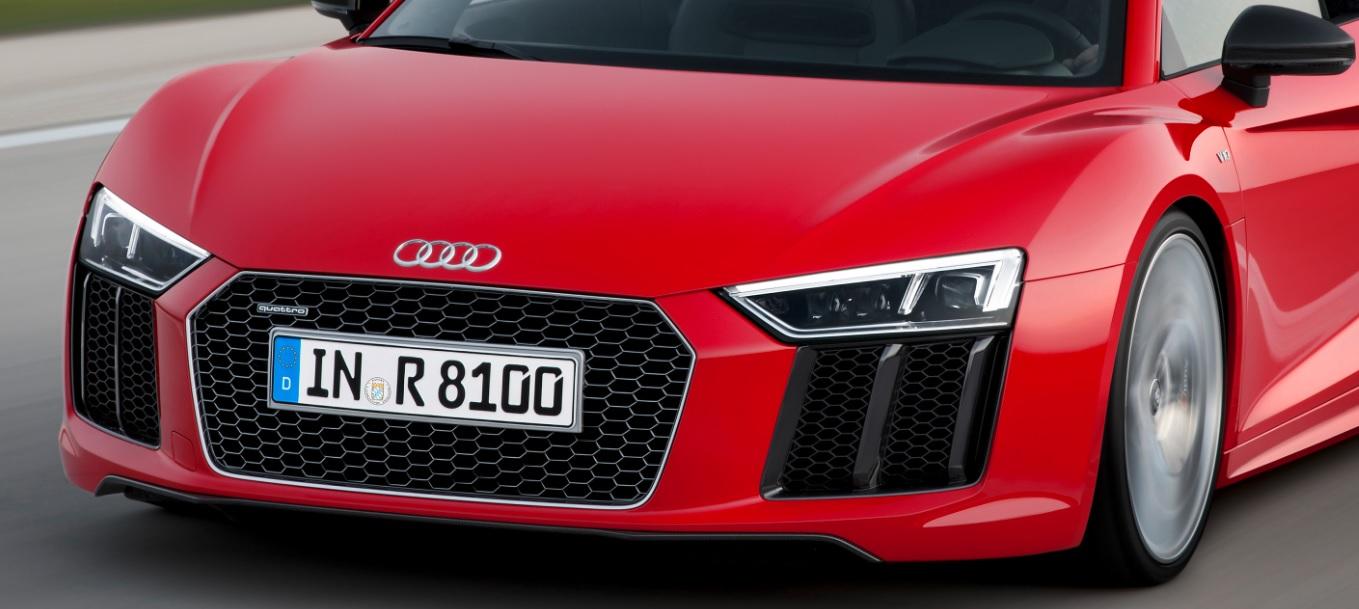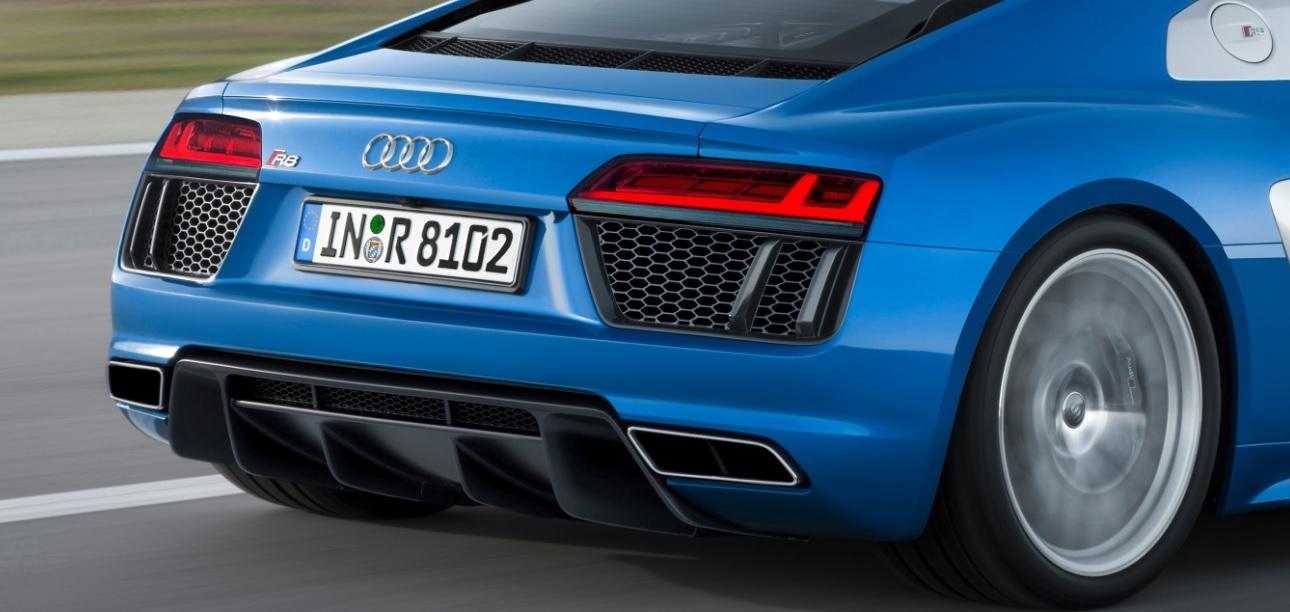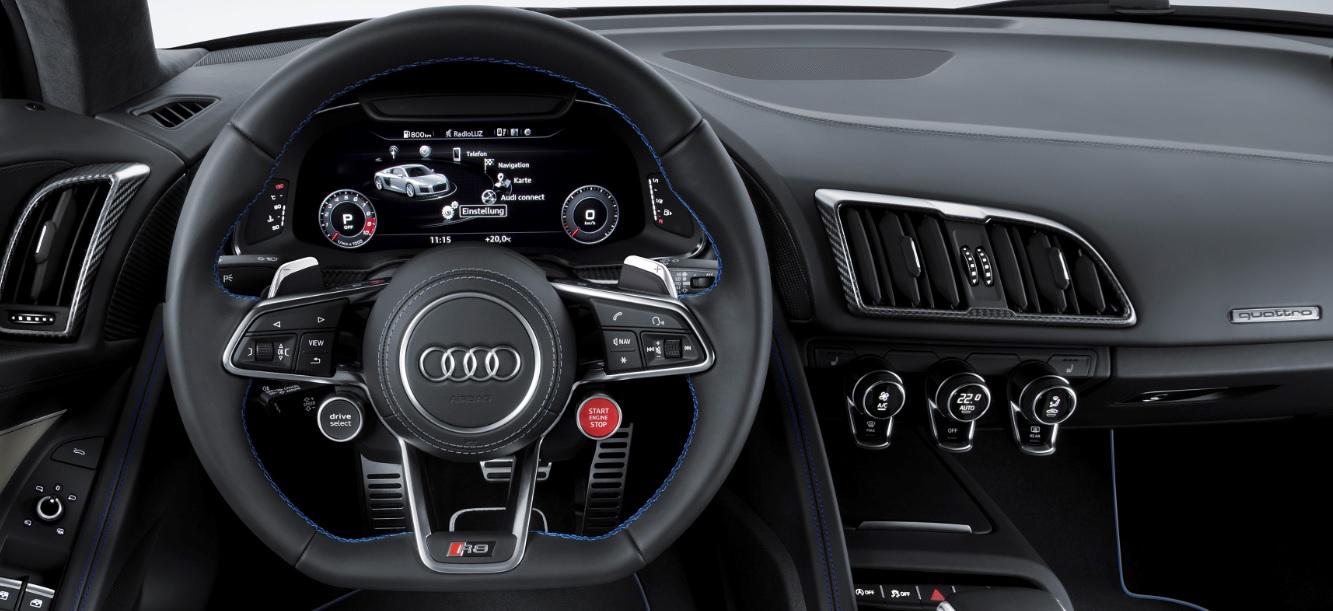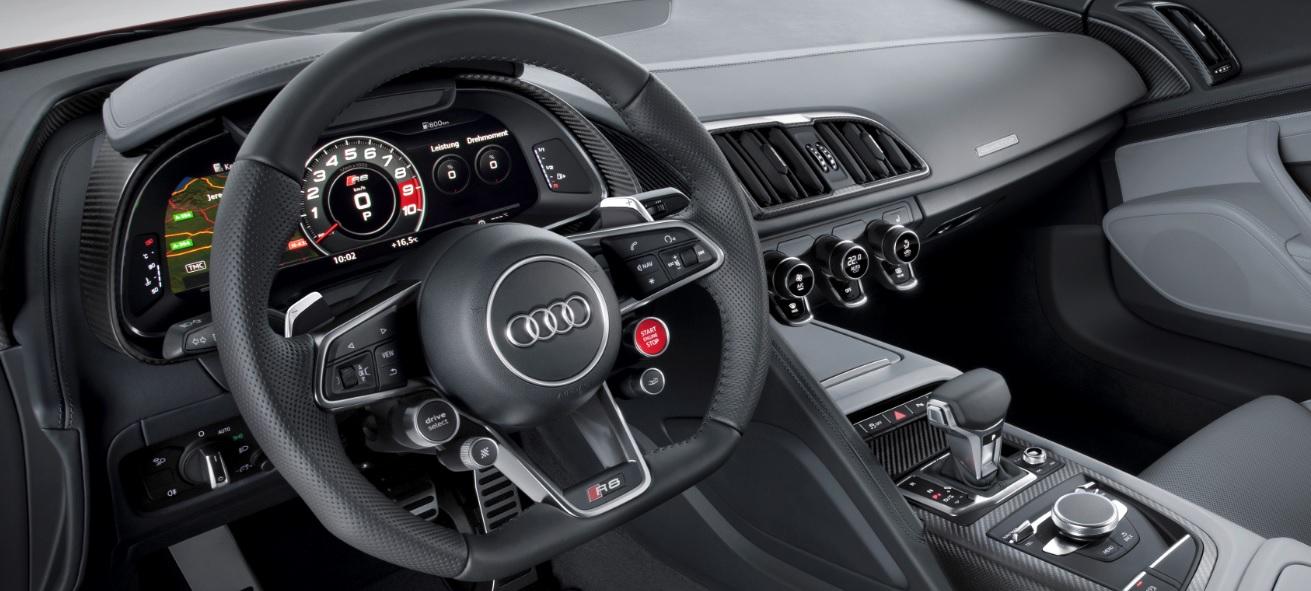Audi has finally unveiled the brand new 2017 R8, one of the most anticipated debuts of next week’s Geneva Motor Show.
As expected, the second-gen R8 ditches the outgoing model’s entry-level eight-cylinder engine and goes V10-only. The mill in question is a Lamborghini-derived naturally-aspirated 5.2-liter V10 that generates 540 horsepower and 398 foot-pounds of torque in its initial state of tune. That’s enough power to send the R8 from zero to 62 mph in 3.5 seconds and on to a top speed of 200 mph.
The more expensive V10 plus model turns the dial up to 11 with an evolution of the ten-cylinder that makes 610 ponies and 413 foot-pounds of twist. The plus takes just 3.2 seconds to reach 62 mph from a stop and it tops out at 205 mph on a long, empty stretch of Germany’s Autobahn.
As predicted, the R8 loses its enthusiast-friendly six-speed manual gearbox and both engines are bolted exclusively to a seven-speed S tronic transmission that can be left in automatic mode or controlled by large shift paddles. The gearbox features shift-by-wire technology that electronically transfers shift commands as well as a built-in coasting function that automatically kicks in when the driver takes his or her foot off the gas above 34 mph.
The coasting function isn’t the only fuel-saving feature built into the new R8. Audi’s range-topping coupe also comes with a start/stop system and cylinder on-demand technology that turns the V10 into a more frugal straight-five when its full output isn’t needed. Both versions of the R8 return about 20 mpg when driven with a light right foot.
A newly-designed version of Audi’s time-tested quattro all-wheel drive system transfers the V10’s power to all four wheels. Up to 100 percent of the torque can be transferred to either the front or the rear axle depending on driving and weather conditions.
The new R8 weighs a little over 3,400 pounds thanks to the widespread use of lightweight materials including aluminum and carbon fiber in its construction. It stretches 174 inches long, 48 inches tall and 76 inches wide, meaning it is roughly the same size as the first-gen model.
Audi’s drive select dynamic handling system lets the driver choose one of four driving modes called comfort, auto, dynamic and individual, respectively, and plus models get a fifth mode dubbed performance.
The R8, all grown up
The second-gen R8 wears a sharper evolution of the original model’s aggressive design. The front end now features a hexagonal Singleframe radiator grille with motorsport-inspired honeycomb inserts, a discreet front splitter, sharp LED headlights and twin air vents with blade-like inserts. Laser beam headlights are available at an extra cost.
Around back, the R8 features a more squared-off rear end with thin LED tail lamps, a small spoiler that automatically extends, a large air diffuser flanked by trapezoidal exhaust pipes and sizable air ducts that help dissipate heat from the engine bay. 19-inch alloy wheels come standard and 20-inch units are available at an extra cost.
The V10 plus model builds on the base R8 with a larger rear spoiler and a number of carbon fiber components including the splitter and the air diffuser.
The inside story
Like the third-gen TT, the new R8 features a refreshingly clean, back-to-the-basics cockpit that is centered around the driver. The previous model’s center console-mounted touch screen has been replaced by a fully configurable 12.3-inch instrument cluster called Virtual Cockpit and a number of essential buttons – including the start-stop button – have been re-located to the steering wheel, freeing up precious real estate on the dashboard.
Audi knows that customization is important at the R8’s price point and it lets buyers choose from five upholstery colors and two leather packages. The cockpit can be further spruced up with optional clear-coated carbon fiber trim on the dashboard, the center console and the door panels as well as a new diamond stitching pattern on the seats.
Fittingly, the 2017 Audi R8 will be built in Audi’s brand new Böllinger Höfe, Germany, factory. Set to go on sale next summer, the base R8 V10 will cost 165,000 euros (roughly $187,500) in Germany while the R8 V10 plus will retail for 187,400 euros (approximately $213,000). Pricing information for the U.S.-spec model will be announced closer to its on-sale date.
The silent R8
An all-electric model dubbed R8 e-tron will join the lineup before the end of the year. Technical details are still few and far between but Audi promises the e-tron will offer a total driving range of 279 miles thanks in part to a T-shaped lithium-ion battery pack designed and built in-house. The coupe will be able to sprint from zero to 62 mph in 3.9 seconds and reach an electronically-limited top speed of 155 mph.
Audi isn’t shy about admitting that it sees the R8 e-tron as a rolling laboratory, and it has confirmed that it will use the knowledge it gains from the project to build its long-rumored Tesla-fighting electric sedan.







